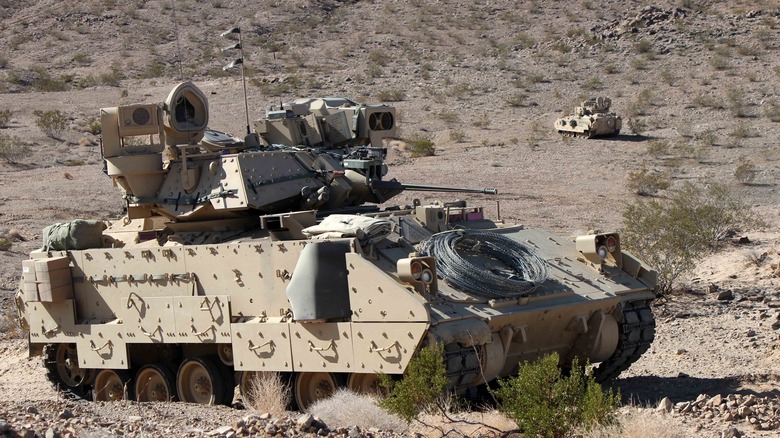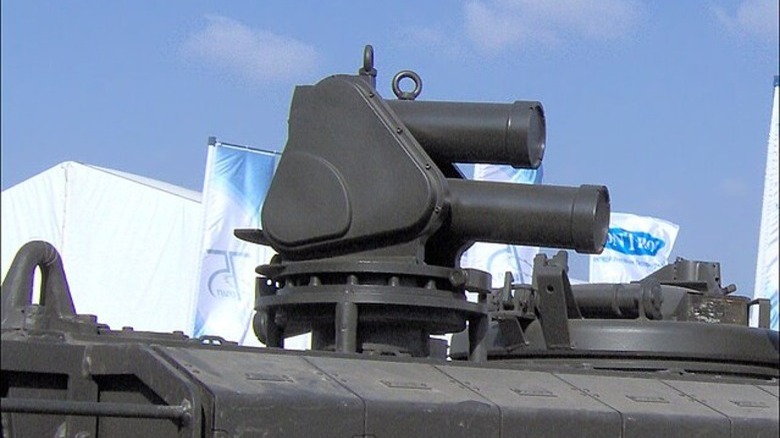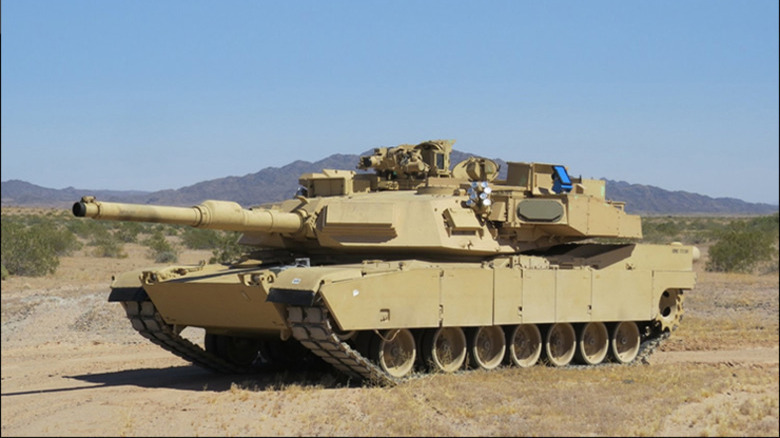Here's What The Army's New 'Iron Fist' Active Protection System On The M2 Bradley Can Do
After years of setbacks, the U.S. Army is finally ready to equip its M2A4 Bradley fighting vehicles with the Israeli-designed "Iron Fist" Active Protection System (APS). Cut from the same cloth as the renowned TROPHY system that's seen extensive service on Israeli Merkava and, in a limited fashion, the American M1A2 Abrams tanks, Iron Fist is designed to protect armored vehicles like the Bradley from incoming threats by physically intercepting missiles and other munitions with a small explosive projectile (called a "counter-munition.")
Initially, the Army had planned to outfit nine brigades of Bradleys with APS, but budgetary constraints forced the service to put the project on hold for some time. However, Major General Glenn Dean, the Program Executive Officer for Ground Combat Systems, recently revealed to Breaking Defense that the Army has secured funding to equip a limited number of Bradleys with the Iron Fist system. While this may be a more modest rollout than originally envisioned, it still represents a significant step forward in getting this cutting-edge technology into the service's motor pool.
What the Iron Fist can Do
The Army is set to install the Iron Fist – Light Decoupled (IF-LD) system on a dozen existing M2A4 Bradleys, with plans to include it on all future new-manufacture vehicles. This advanced defensive technology utilizes a combination of electro-optical sensors, capable of detecting targets in the long-wave infrared (LWIR) band, and radars to identify incoming threats such as rocket-propelled grenades and anti-tank missiles. The sensors feed the main computer with data on the threat, which then crunches out the numbers for a firing solution.
An interceptor, equipped with a small blast warhead, is then launched from the mortar-like launcher bolted to the side of the vehicle. As it passes by the threat, it detonates and creates a cloud of shrapnel and a blast wave designed to disable the incoming projectile before it reaches the vehicle. Some versions of the Iron Fist system even include a "soft-kill" module that emits a dazzling laser to misdirect anti-tank guided missiles (ATGMs).
This entire killchain happens in milliseconds, all thanks to the high-powered 360-degree radars that serve as the Iron Fist's "eyes." Interestingly, the power requirements of these radars and accompanying sensors, which peak at 820 watts, were so demanding that older Bradley models were unable to support the Iron Fist, as their engines couldn't generate sufficient power. But considering how the system was able to intercept 90 percent of the 400 threats thrown at it during testing, all that power drawn is put to quite effective use.
How is It Different from TROPHY?
Besides Iron Fist, the Army also fields the TROPHY system of Israeli firm Rafael Advanced Defense Systems. The system is equipped for its heavy armor platforms, chiefly, the M1 Abrams MBT.
Iron Fist and TROPHY share many similarities, such as their "hard-kill" (physically destroying) approach to eliminating an incoming threat. However, the key difference lies in how the two systems neutralize those projectiles. While Iron Fist employs a single interceptor, TROPHY uses a turret to fire a tight "shotgun blast" of small explosively formed penetrators at the target. Although both systems have proven equally capable of defeating critical threats to armored vehicles, the Army selected the Iron Fist in 2016 to pair with the Bradley due to its lightweight design. According to the Army's Director, Operational Test and Evaluation (DOT&E), the Iron Fist adds only 1,543 pounds to the Bradley, whereas TROPHY integration on the M1 Abrams adds an extra 7,200 pounds. While an MBT can accommodate this weight without a problem, an Infantry Fighting Vehicle (IFV) like the Bradley cannot.
With a clear roadmap now in place for deploying a robust APS on the Bradleys, the Army is one step closer to future-proofing its troop carriers for the modern battlefield. Ample evidence from conflicts in Gaza and Ukraine has highlighted the vulnerability of armored vehicles to threats such as drone-dropped grenades and guided anti-tank missiles. The Iron Fist, it seems, is the perfect solution to counter those threats.


